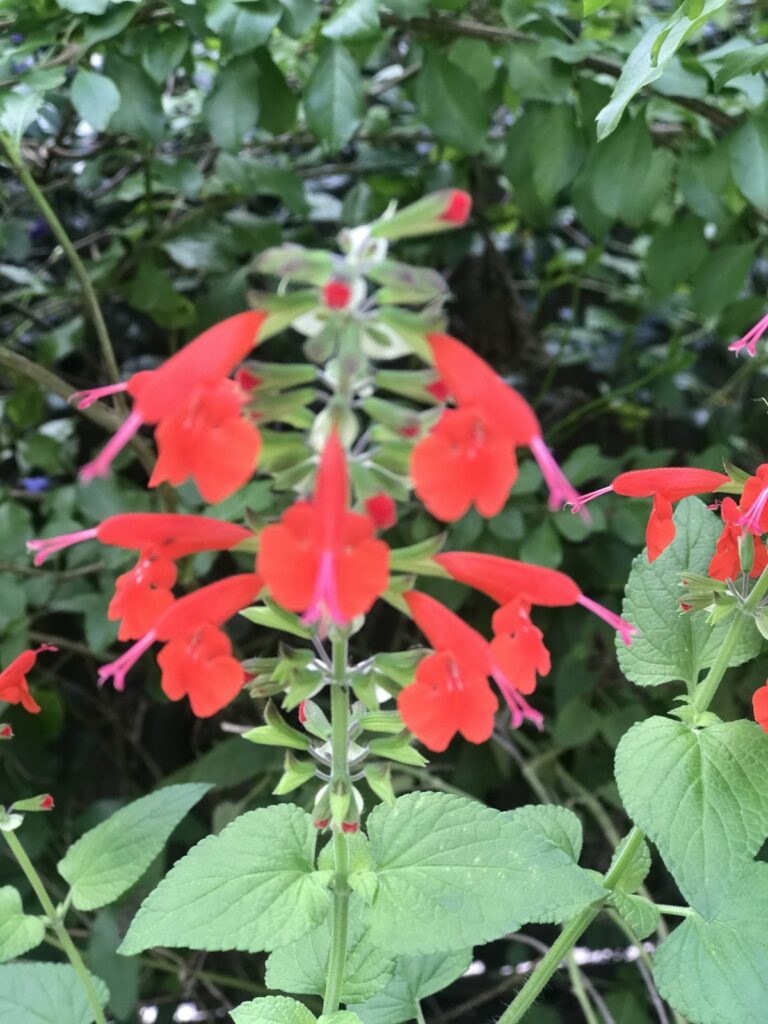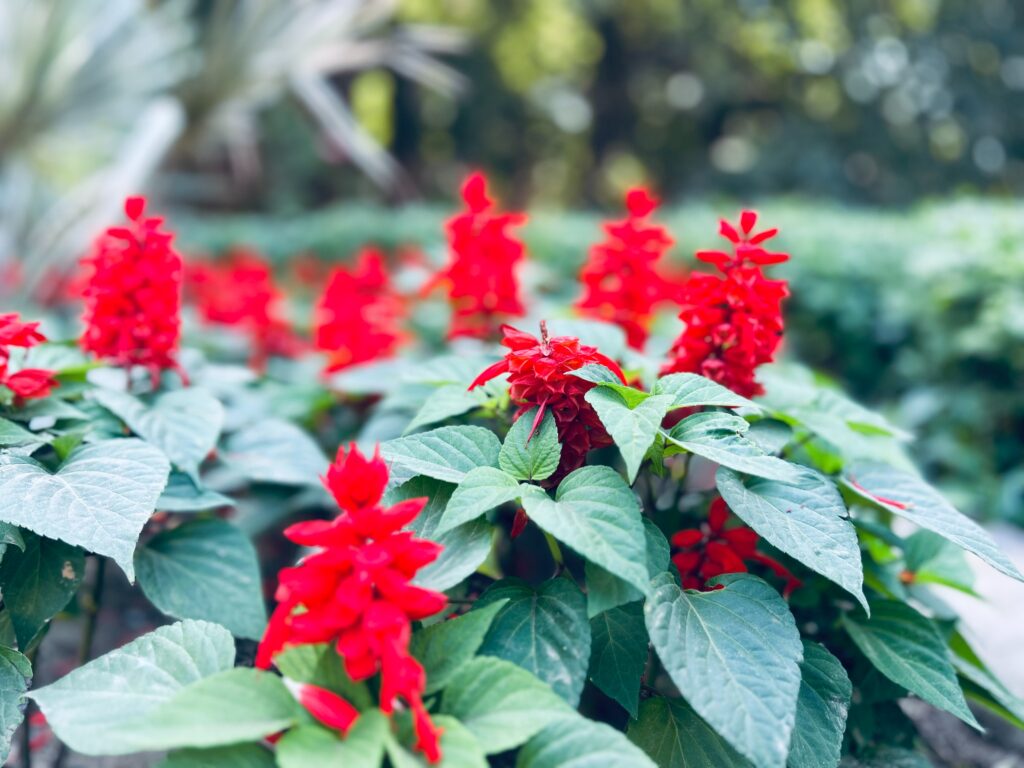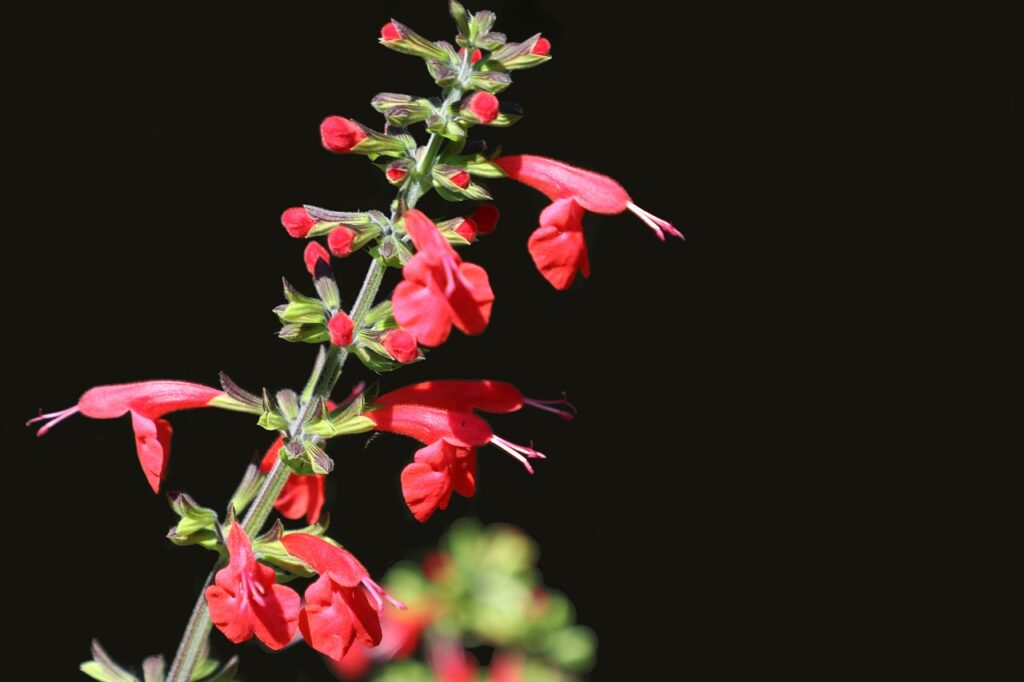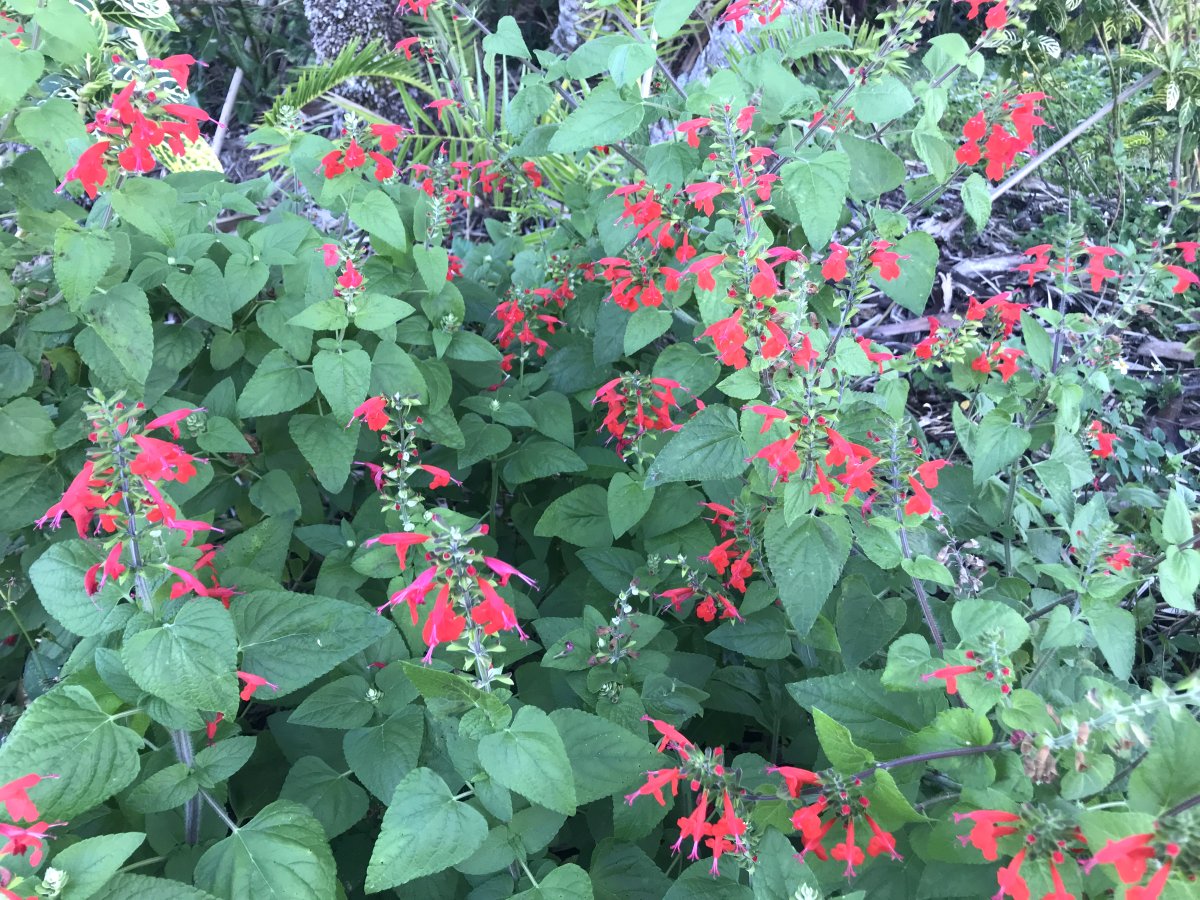Scarlet Sage, scientifically known as Salvia coccinea, is an attractive and easy-to-grow flowering plant. Also referred to as Tropical Sage or Blood Sage, it belongs to the Lamiaceae family. Growing Scarlet Sage in your garden will attract butterflies, bees, and hummingbirds.
With striking red, scarlet, or sometimes coral-colored flowers, Scarlet Sage is a delightful addition to gardens and landscapes. It thrives in different zones and seasons, making it a versatile choice for garden enthusiasts.
When to Start Scarlet Sage Seeds
In zones 3-5, which are colder regions, it’s best to start Scarlet Sage seeds indoors or under cover about 8-10 weeks before the last expected frost in spring.
In zones 6-8, you can start seeds indoors or under cover around 6-8 weeks before the last expected frost, or opt for direct sowing after the last frost.
In zones 9-12, you can grow Scarlet Sage year-round, allowing for both indoor and direct sowing options.

How to Start Scarlet Sage Seeds
To get a head start on your perennial flower bed, start Scarlet Sage seeds indoors.
Seed Starting Mix
Choose or prepare a mix with equal parts of perlite, coconut coir, and vermiculite. This mix promotes good drainage and aeration.
Containers
Opt for small containers that are at least 2 inches deep, providing ample space for root development.
Planting Depth
Surface sow in the seed cells, and press down lightly to ensure soil contact.
Moisture
Keep the mix consistently moist but not soggy. Use a misting spray to avoid disturbing the seeds.
Temperature
Maintain a temperature of around 75°F to 80°F for optimal germination.
Light
Scarlet Sage seeds require light for germination. Provide indirect sunlight or fluorescent lights.
Germination Time
When growing Scarlet Sage, you’ll find the seeds typically germinate in 10-14 days, although they may take up to three weeks.

When Scarlet Sage Plants Are Ready to Plant Out
Wait until seedlings have several sets of true leaves and are about 6-8 inches tall before transplanting them to the garden.
How to Prepare the Garden Bed for Scarlet Sage
Select a location that receives ample sunlight, ideally offering full sun to light shade. Scarlet Sage thrives when exposed to at least 6 hours of sunlight each day.
You’ll need to plant them somewhere they will receive consistent soil moisture for the first season. Ensure proper drainage to prevent waterlogging.
Choose a site with good drainage, with plenty of organic matter content. Scarlet Sage prefers slightly acidic to neutral soil with a pH level ranging from 6.5 to 7.5. Amending the soil with organic matter, such as compost, will enrich the soil.
However, you should note that Scarlet Sage is pretty tolerant of poor soils and dry weather once established.
Preparing the Garden Bed
Clear the chosen garden bed of any weeds, rocks, or debris. This ensures a clean start for growing Scarlet Sage plants.
If necessary, use a garden fork to loosen the soil where you’ll be planting. Avoid over digging, since it can disturb soil microbiology and cause problems with soil structure.
If your soil lacks organic matter or has the wrong pH level, add a layer of finished compost to the garden bed.
If possible, thoroughly water the area where you’ll be planting your Scarlet Sage the day before planting out. This ensures that the soil is deeply and evenly moist and ready to receive your transplants.

Hardening Off Scarlet Sage Starter Plants
Gradually expose the plants to outdoor conditions for about a week before planting. Start with a few hours of indirect sunlight and gradually increase exposure every day or other day until they are accustomed to full sun.
How to Plant Scarlet Sage Plants into the Garden
Transplant seedlings at the same depth as they were in their containers. Space the plants 12-18 inches apart to allow proper air circulation.
Apply a layer of compost after planting, if possible, and water your plants in thoroughly.
After watering deeply, add a layer of organic mulch, such as woodchips, to help retain moisture and regulate soil temperature. It will also suppress weeds.
Caring for Scarlet Sage Plants
After planting out, keep the soil consistently moist, but avoid overwatering.
Fertilize with a balanced, all-purpose granular fertilizer in the spring and again every month once flowers appear.
Tips and Tricks for Growing Scarlet Sage
Ensure good air circulation and avoid overhead watering to prevent fungal diseases.
A solution of 6 Tablespoons of hydrogen peroxide to a gallon of water can help control powdery mildew if it occurs. Spray this solution once every three days for a week to treat.

What to Expect of Scarlet Sage
Scarlet Sage will bloom from late spring to early fall, producing vibrant flowers.
In colder zones, the plant may not overwinter, but it readily self-seeds.
In warmer zones, Scarlet Sage can bloom year-round, or it may become perennial with mild winters.
Scarlet Sage, with its vivid blooms and ease of care, is a charming addition to any garden. With proper attention to its specific requirements, you can enjoy its striking beauty throughout the growing season. Whether in colder or warmer zones, these versatile plants can be a delightful part of your garden landscape. Happy gardening!





